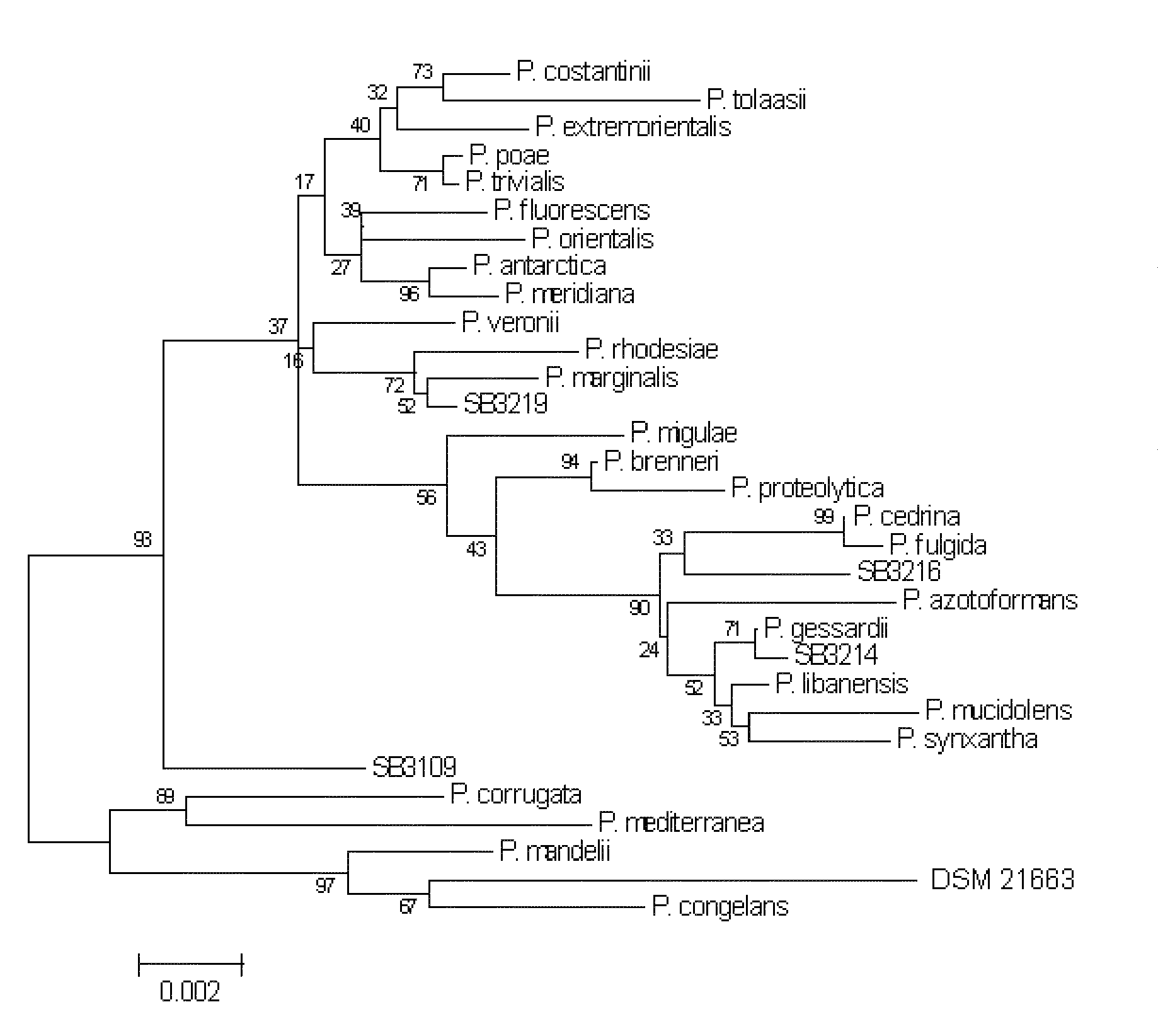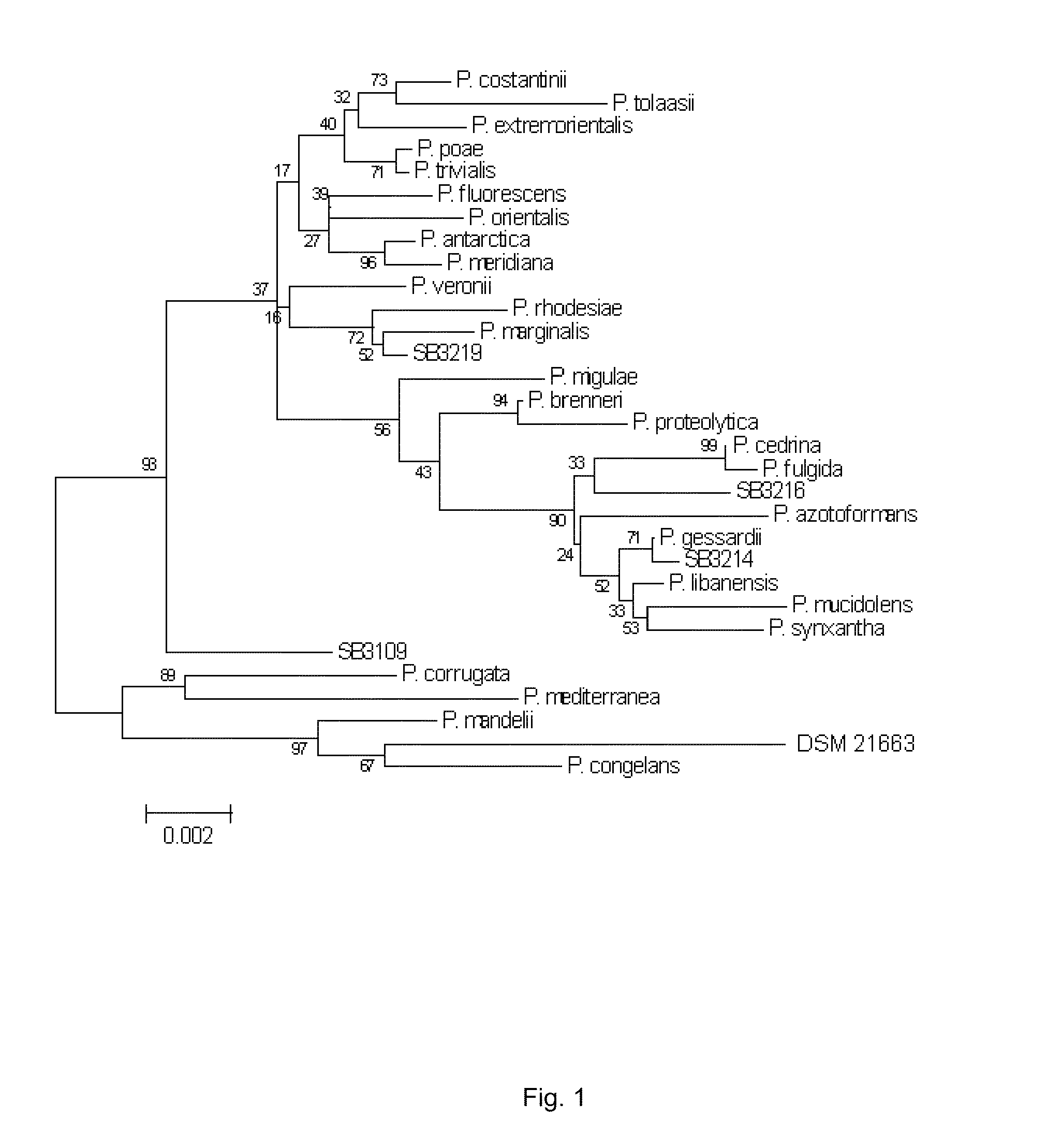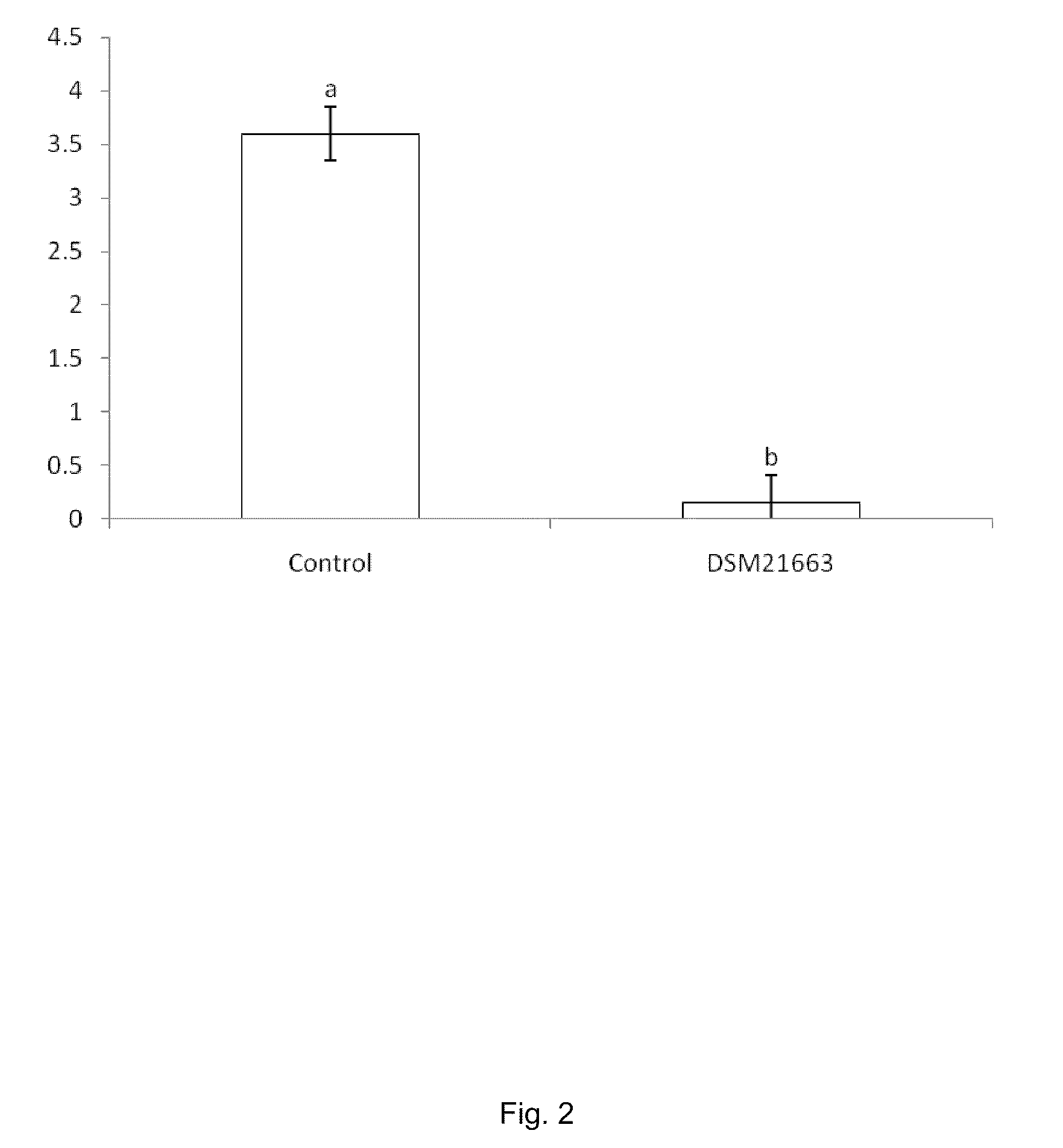Pseudomonas Bacterium
- Summary
- Abstract
- Description
- Claims
- Application Information
AI Technical Summary
Benefits of technology
Problems solved by technology
Method used
Image
Examples
example 1
Identification of the Pseudomonas Isolate DSM 21663 by 16S rDNA Analysis
[0061]Phylogenetic comparison calculations were done using the program CLUSTALX to align a 1500 by sequence from the 16S RNA gene the, (SEQ ID NO: 1) to other closely related species (indicated by an initial BLAST analysis of the sequence). Once the multiple alignment file was created, a Neighbor Joining tree was constructed, and a distance matrix was calculated as the basis for identifying the genus and species of the strain. All alignment and phylogenetics related operations were done in Mega 4.0. Sequences were imported into the Alignment Explorer in Mega, and then aligned using ClustalW. From the analysis performed at MIDI Labs in Newark, a DNA distance matrix was obtained and a phylogenetic tree was constructed using bootstrapping to test the robustness.
[0062]The phylogenetic tree shown in FIG. 1 represents the fluorescens branch of Pseudomonas. DSM 21663 was most closely related to Pseudomonas congelans, b...
example 2
Bio-Control Plate Assay
[0066]A dual plate laboratory assays (assays for in vitro antibiosis) was carried out in order to provide an indication of the antimicrobial spectrum of a candidate bacterium / fungus. In such assays, an antagonist placed in proximity of a plant pathogen (fungus / bacterium) will inhibit the growth of the pathogen. Pathogen inhibition can be seen as a zone of inhibition around the antagonist.
[0067]DSM 21663 has been evaluated in dual plate laboratory assays against a number of plant pathogens, both fungi and bacteria.
Dual Plate Laboratory Assay:
Antifungal and Antibacterial Assays for Pseudomonas DSM 21663
[0068]Plant pathogenic bacterial cultures (listed in Table 4) were prepared by picking a single colony and adding to 9 mL of plate count broth (PCB). Plate count broth consists of yeast extract 5.0 g, tryptone 10.0 g and dextrose 2.0 g / liter and a final pH of 7.0-7.2. It is autoclaved at 121° C. for 15 min before use. The cultures were incubated overnight at 35° C...
example 3
Detection of P-Solubilization by Pseudomonas DSM 21663 in Solid and Liquid Media
Plate Assay:
[0075]Modified Sperber's solid medium (Alikhani, Saleh-Rastin and Antoun, Proc. 1st Intl Meeting on Microbial Phosphate Solubilization, 2007) was used.
[0076]The basal Sperber (1958) contained (in g / L of distilled water):
Glucose10.0Yeast extract0.5CaCl20.1MgSO4•7H2O0.25Agar15.0
[0077]The Sperber's was supplemented with 2.5 g / L of Ca3(PO4)2 as P source. The pH was adjusted to 7.2 before autoclaving. The autoclaved medium was distributed in 9.0 cm Petri plates and marked in four equal parts after solidification.
[0078]Inoculation of bacterial strains: The four parts of each Sperber agar plate were inoculated with 7 μl of a dilute cell suspension of each test strain. Inoculated plates were incubated in darkness at 27° C.
[0079]Diameter of a clear zone (halo) that developed around bacterial growth of strains that are positive for P-solubilization was measured after 10, 20 and 30 days. Each assay was ...
PUM
 Login to View More
Login to View More Abstract
Description
Claims
Application Information
 Login to View More
Login to View More - R&D
- Intellectual Property
- Life Sciences
- Materials
- Tech Scout
- Unparalleled Data Quality
- Higher Quality Content
- 60% Fewer Hallucinations
Browse by: Latest US Patents, China's latest patents, Technical Efficacy Thesaurus, Application Domain, Technology Topic, Popular Technical Reports.
© 2025 PatSnap. All rights reserved.Legal|Privacy policy|Modern Slavery Act Transparency Statement|Sitemap|About US| Contact US: help@patsnap.com



